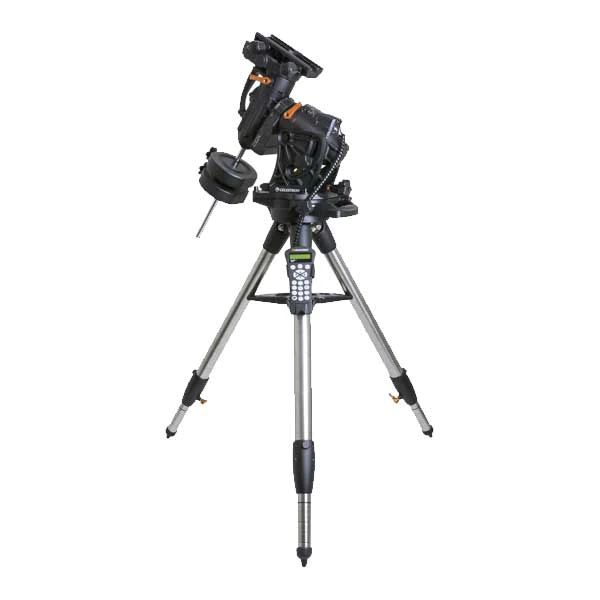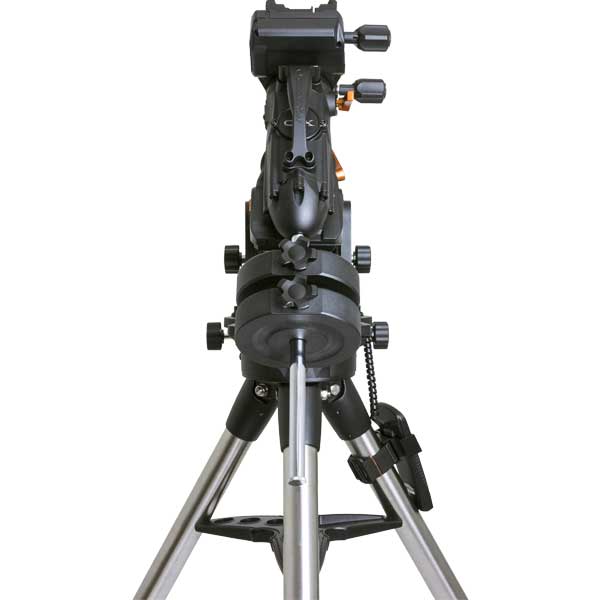Description
The newly designed Celestron CGX mount offers a number of advancements in capacity and performance vs. previous generation mounts.
Celestron has packed so many improvements into this new generation mount that it is hard to know where to begin. Many of these improvements are aimed squarely at the imaging market, so we will begin there. For starters, Celestron has incorporated a belt drive system to provide smoother operations, even when slewing a heavy instrument package. They have also incorporated home position sensors so that the mount will always start from a known index position upon power up. This makes it easier for anyone to perform the go to alignment, but it is especially important for anyone contemplating remote operation of the telescope via a computer interface.
Speaking of a computer interface, Celestron has incorporated a USB 2.0 interface. Conversion from RS232 to USB at the physical connection layer is a thing of the past! If you do plan to to operate the mount from a PC, a new control program developed in cooperation with PlainWave Instruments is being introdiced with this mount.
On the mechanical side, we are pleased to see that Celestron has eliminated the exterior wiring to the Declination motor. They have also incorporated a dual saddle that will accept both D (Losmandy) and V (Vixen) style dovetail bars; that’s CG-5 and CGE in Celestron terminology. The instrument capacity of this mount is 55 pounds (25 kg), which is adequate for the EdgeHD 1100 optical tube equipped with a camera and guidescope.
Yet another innovative feature is a three position mounting interface between the equatorial head and tripod, allowing you options for finding the optimal center of gravity and the ability to operate in low latitude locations without having the counterweight shaft collide with the tripod legs.
Major components include the equatorial head, tripod, and counterweight, weighing 44 pounds, 19.2 pounds, and 17 pounds respectively. With the heaviest single component weighing only 44 pounds, nearly anyone should find it easy to set this mount up in the field. Large knobs for azimuth and latitude angle, combined with a Teflon bearing on the azimuth axis, make it easy to perform fine adjustments in polar alignment.
Another thing that impresses us with this mount is the location of all electrical connectors, including DC Power, the hand control, autoguider port and USB port. All of these connectors and more are located on a non-moving part of the mount. This greatly reduces the chances of cables getting tangled or pulled out as the mount moves your telescope about the sky.


